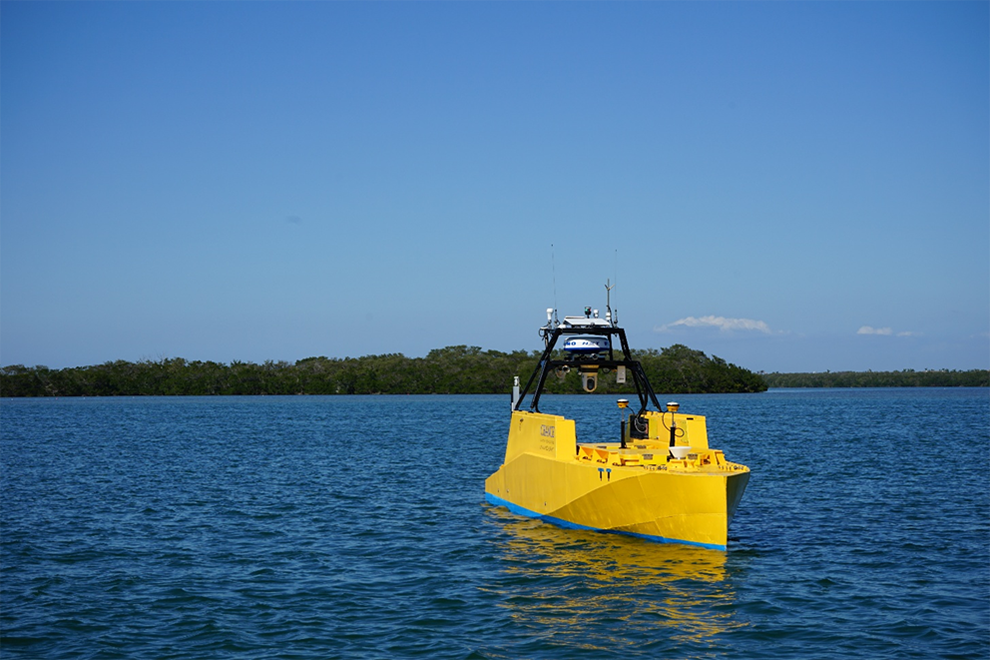By: Carlyn Scott, Science Communications Manager
This article has been adapted from an announcement by Chance Maritime Technologies.
ST. PETERSBURG, Fl. (April 1, 2025) — The University of South Florida College of Marine Science’s Center for Ocean Mapping and Innovative Technologies (COMIT) recently collaborated with Chance Maritime Technologies to acquire data at three backscatter calibration sites off the coast of Tampa Bay.
Backscatter data is collected by sonars, showing the intensity of the sound signal returned by the seafloor. In this way we can map not just how deep the water is but also understand the properties of the seafloor. These data are important for applications such as habitat mapping, physical hazard identification, and seafloor characterization for environmental management.
To use and compare backscatter data between different surveys using different equipment, it is important to establish calibration sites. These backscatter calibration sites ensure that mapping efforts conducted in different places, with different gear, at different times, can be standardized for accurate comparison.
“The goal is to provide a multibeam backscatter calibration site for NOAA Office of Coast Survey, academic, and industry partners in the vicinity of Tampa Bay,” said Stephan O’Brien, senior research associate at COMIT.
Traditional data collection offshore requires large, expensive boats to spend days, weeks, or sometimes months offshore driving back and forth across the seafloor. To make this work more efficient, Chance Maritime created new self-driving boat technology. Chance Maritime developed its LR30, a 30-foot-long uncrewed boat to quickly collect data at sea.
To complete the survey, two different types of sonars were used, multibeam and split beam. The multibeam sonar transmits a fan of acoustic pulses towards the seafloor to give a highly detailed depth map. The split-beam sonar is commonly used for fisheries assessments, and focuses more on what is in the water column such as schools of fish. Both systems were able to be mounted simultaneously to the LR30, allowing the survey to be completed quickly and without having to return to port to be reconfigured.

The COMIT and Chance Maritime teams set up a remote operations center at COMIT’s facility in St. Petersburg to operate the ocean drone and its sensors. Students and faculty from COMIT operated the sonars, while operators from Chance Maritime piloted the LR30.
The collaboration between COMIT and Chance Maritime to use ocean drones for backscatter data collection pushes the needle forward on more safe and efficient methods for ocean data acquisition. COMIT’s backscatter calibration sites will ensure that seafloor data collected for years to come will be more accurate and comparable. This ultimately enables stakeholders to make informed policies on how ocean resources can be preserved and used for generations.
